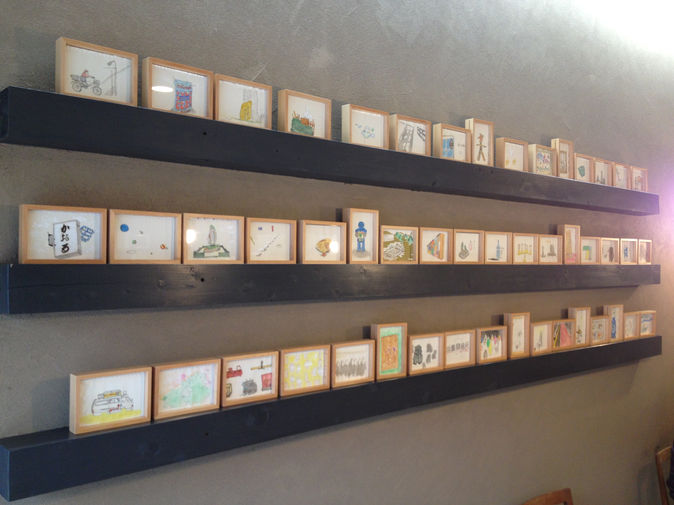Keijiro
Suzuki
Audio/Visual Archives by Owari-born Painter in residence at the temporary Shinto Shrine on Ekidori Street, Yamaguchi
2015
Community Project
Created as the temporary space
“Audio/Visual Archives by Owari-born Painter in residence at the temporary Shinto Shrine on Ekidori Street, Yamaguchi” was inspired by a presence of historical painter who carried out his residence at Imahachiman Shrine, Yamaguchi, Japan. He was born in Owari area (now Nagoya city, Aichi) and came all the way down to Yamaguchi. Historically speaking, artists (painters and sculptors) were often invited to create artwork for Shinto shrine and Buddhist temples on request or without request. It was a one way to distribute noble wisdom and virtue inherited from China. This Owari-born painter also created a series of paintings with life lessons and left them at Imahachiman Shrine.
For this project, I was fascinated by this coincident that this Owari-born painter and myself were both from Owari (now Nagoya city). Based on this fact, I expanded this idea and I enacted this historical character in this time based on my personal memories and interpretations.
This project also dealt with people who have association with Yamaguchi and Owari context. For example, during this project, Thomas Struth visited Yamaguchi through his friendship with Thomas’s old friend in Yamaguchi. Struth created a series of photograph focusing on “Street”. One of the series of “Street” was made in Yamaguchi at his early career. In this project, Suzuki and his collaborator visited some street where Thomas Struth took photographs of and took a photograph facing opposite of the Struth’s “Street” photograph. This was later turned into a post card and distributed as edition of 300.
In this project, Suzuki made 100 paintings to reflect actual places and things that features Yamaguchi (partially also Owari). He painted them from photographs that he took and slightly abstracted them.
In addition to this, he created a collaborative video work through improvisational script writing workshop based on this project concept. It was a conversation by three imaginary but half factual characters who visited Yamaguchi.














